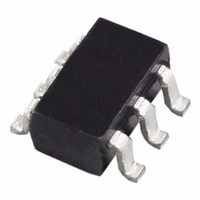AD5310BRT-REEL7 Analog Devices Inc, AD5310BRT-REEL7 Datasheet - Page 5

AD5310BRT-REEL7
Manufacturer Part Number
AD5310BRT-REEL7
Description
IC DAC 10BIT R-R W/BUFF SOT-23
Manufacturer
Analog Devices Inc
Datasheet
1.AD5310BRMZ.pdf
(12 pages)
Specifications of AD5310BRT-REEL7
Rohs Status
RoHS non-compliant
Settling Time
6µs
Number Of Bits
10
Data Interface
Serial
Number Of Converters
1
Voltage Supply Source
Single Supply
Power Dissipation (max)
1.25mW
Operating Temperature
-40°C ~ 105°C
Mounting Type
Surface Mount
Package / Case
SOT-23-6
Available stocks
Company
Part Number
Manufacturer
Quantity
Price
Company:
Part Number:
AD5310BRT-REEL7
Manufacturer:
MIT
Quantity:
455
REV. A
TERMINOLOGY
Relative Accuracy
For the DAC, relative accuracy or Integral Nonlinearity (INL)
is a measure of the maximum deviation, in LSBs, from a straight
line passing through the endpoints of the DAC transfer func-
tion. A typical INL vs. code plot can be seen in Figure 2.
Differential Nonlinearity
Differential Nonlinearity (DNL) is the difference between the
measured change and the ideal 1 LSB change between any two
adjacent codes. A specified differential nonlinearity of 1 LSB
maximum ensures monotonicity. This DAC is guaranteed
monotonic by design. A typical DNL vs. code plot can be seen
in Figure 3.
Zero-Code Error
Zero-code error is a measure of the output error when zero code
(000 Hex) is loaded to the DAC register. Ideally the output
should be 0 V. The zero-code error is always positive in the
AD5310 because the output of the DAC cannot go below 0 V.
It is due to a combination of the offset errors in the DAC and
output amplifier. Zero-code error is expressed in mV. A plot of
zero-code error vs. temperature can be seen in Figure 6.
Full-Scale Error
Full-scale error is a measure of the output error when full-scale
code (3FF Hex) is loaded to the DAC register. Ideally the out-
put should be V
percent of full-scale range. A plot of full-scale error vs. tem-
perature can be seen in Figure 6.
DD
– 1 LSB. Full-scale error is expressed in
–5–
Gain Error
This is a measure of the span error of the DAC. It is the devia-
tion in slope of the DAC transfer characteristic from ideal
expressed as a percent of the full-scale range.
Total Unadjusted Error
Total Unadjusted Error (TUE) is a measure of the output error
taking all the various errors into account. A typical TUE vs.
code plot can be seen in Figure 4.
Zero-Code Error Drift
This is a measure of the change in zero-code error with a
change in temperature. It is expressed in V/ C.
Gain Error Drift
This is a measure of the change in gain error with changes in
temperature. It is expressed in (ppm of full-scale range)/ C.
Digital-to-Analog Glitch Impulse
Digital-to-analog glitch impulse is the impulse injected into the
analog output when the input code in the DAC register changes
state. It is normally specified as the area of the glitch in nV secs
and is measured when the digital input code is changed by
1 LSB at the major carry transition (1FF Hex to 200 Hex). See
Figure 19.
Digital Feedthrough
Digital feedthrough is a measure of the impulse injected into the
analog output of the DAC from the digital inputs of the DAC
but is measured when the DAC output is not updated. It is
specified in nV secs and is measured with a full-scale code
change on the data bus, i.e., from all 0s to all 1s and vice versa.
AD5310














